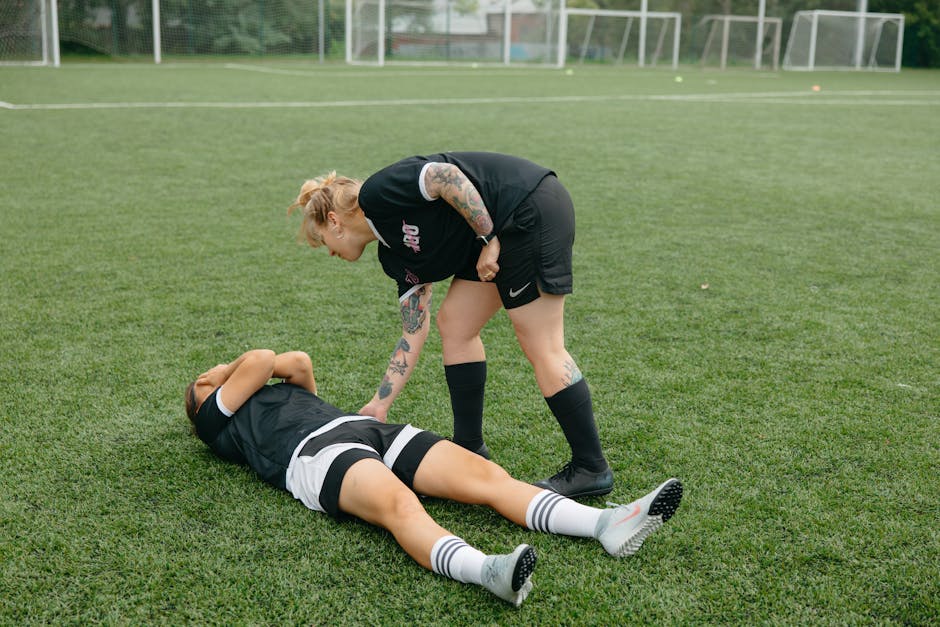Why Mental Fitness Isn’t Optional
Focus is the edge. In sports, it’s the split-second decision that wins the game. In life, it’s the ability to stay on track when everything tries to pull you sideways. You can have all the talent, all the drive, but without focus, it scatters. That’s why mental fitness matters—it’s not just about showing up, it’s about locking in.
The tricky part is knowing the difference between being motivated and being mentally strong. Motivation is the spark. Mental stamina is the engine that keeps going long after it stops feeling good. Anyone can feel fired up for a day. Mental fitness means you stay sharp and consistent for weeks, months, seasons.
When attention drifts, the damage isn’t always obvious right away. But it adds up—missed cues, sloppy work, poor decisions that come back to bite. Whether you’re an athlete, a founder, or just trying to get through the day with purpose, focus isn’t nice to have—it’s the main thing.
Technique 1: Build a Mental Warm-Up Routine
You don’t walk into the gym and go straight to your heaviest lift. Same goes for your brain. Your mind needs to be primed, just like your muscles. A quick mental warm-up gets your head in the game and sharpens focus before the stakes rise—whether that’s walking into a big meeting or lining up at the start line.
Start simple. Try box breathing: inhale for four counts, hold for four, exhale for four, hold, repeat. It calms the nervous system fast. Then visualize. Close your eyes for a short 60-second scene of executing the task cleanly and with control. Finally, set your intention—one clear outcome you want from the next hour. Not ten. One.
Use this trio—breathing, visualization, and intention setting—to reset before training, work, competitions, or any moment that counts. When it becomes habit, pressure doesn’t rattle you. Because you’re already locked in.
Technique 2: Practice Single-Tasking
Our modern world is built for multitasking, but neuroscience says otherwise: multitasking isn’t efficiency—it’s fragmentation. Trying to do several things at once rapidly burns mental energy and weakens your ability to focus deeply.
Why Multitasking Shreds Focus
Focus thrives on depth, not friction. When you’re constantly switching tasks, your brain spends time and energy refocusing instead of doing meaningful work.
- Each task switch introduces cognitive delays (known as attention residue)
- Mental fatigue increases as your brain toggles too quickly
- The quality of thinking, decision-making, and memory declines under multitasking stress
Instead of spreading thin, the path to stronger mental fitness runs through deliberate, single-task focus.
Train with Controlled Distractions
You won’t eliminate distractions completely—but you can train how you respond to them. Start with controlled conditions:
- Time-block specific tasks with no other browser tabs or apps open
- Choose environments that limit background noise and interruptions
- Practice being aware when shifting attention—and correct it intentionally
Training this way turns focus into a conscious act, not a lucky byproduct.
Tools That Help You Stay on Target
Technology can hinder focus—but it can also strengthen it when used wisely. Try these tools to support your single-tasking practice:
- Pomodoro Timers (like Focus Keeper or TomatoTimer) to chunk work with rest breaks
- Distraction blockers (Freedom, Cold Turkey) to silence unnecessary noise
- Mindfulness apps (Oak, Insight Timer) to train present-moment awareness
The goal isn’t to be perfect—it’s to build mental stamina over time. One task. One moment. Mastered repeatedly.
Technique 3: Use Visualization to Stay Locked In
Mental imagery isn’t just for Olympians or elite sprinters—it’s a tool anyone can tap. If you’ve ever rehearsed a conversation in your head or pictured how a workout might feel, you’ve already used it. The difference now is doing it with intention, consistency, and structure.
You don’t need an hour. Three focused minutes can be enough. Here’s how to use them:
- Start with breath — Even out your inhale and exhale. Give your brain a cue: it’s time to focus.
- Visualize the task ahead — Maybe it’s a lift, a run, a presentation. Picture your form, your pace, your rhythm.
- Go multi-sensory — Don’t just see it. Hear the room. Feel the weight. Taste the sweat. This deepens the imprint.
Pairing mental reps with physical ones locks in gains. Do the visualization. Then drill it. Your brain builds the pathway before your body ever moves. This is how top performers stay sharp—and it’s completely accessible. All it costs is 180 seconds and a quiet spot.
Technique 4: Leverage Movement for Mental Clarity
Your brain isn’t floating in a vacuum—it runs on what your body does. Movement fuels focus. Physical activity wakes up your nervous system, improves circulation, and resets frayed attention. That’s why even a few minutes of motion can clear the mental fog faster than another cup of coffee.
You don’t need to hit the gym. Microbreaks are the cheat code: a five-minute walk, a round of mobility flows, or a few cycles of slow breathwork (box breathing hits different when you’ve been staring at a screen too long). These small resets give the brain space to recalibrate and refocus.
Best times to plug in a microbreak? Mid-morning, right before the afternoon slump hits, or between transitions—after a meeting, before a training session, post-task. The point is to break the build-up of cognitive fatigue before it tanks your performance. Motion isn’t a luxury. It’s a reset button you can hit anytime.
Technique 5: Reframe Distraction Loops
When your brain gets stuck in a loop—inner monologue racing, thoughts spiraling—it’s easy to lose the thread of focus. First move? Cut the loop. That doesn’t mean suppressing the thoughts. It means interrupting them. Change your environment. Stand up. Walk. Speak out loud. Anything that breaks the internal echo chamber.
Then, get tactical. One proven way to halt mental static is the “name it to tame it” method. When you can label what you’re feeling—”I’m anxious about missing a deadline” or “I’m distracted by that conversation from earlier”—you give your brain a place to put it. That naming process puts the brakes on runaway thought patterns.
Follow it up with short-form mental journaling. This isn’t a therapy session. It’s two minutes of writing down the noise. Doesn’t have to be polished—just dump the top layer. Often, that’s enough to reset your focus and give your mind some air.
These techniques aren’t flashy. But they create a buffer between you and the chaos. And when you control how your thoughts land, you control how you show up.
Bonus: Focus During Recovery and Rehab
Injury cuts deeper than muscle and bone. When you’re sidelined, it’s not just your body that hits pause—your mind starts to drift too. The routines vanish. The momentum halts. And if you’re not careful, mental fog creeps in to fill the space.
But just because you’re benched doesn’t mean you go passive. Your brain still needs reps. During rehab, staying mentally sharp means building structure. Set daily intentions. Visualize training even if you’re out of the gym—same drills, same intensity, just in your head. Stay involved with your team or training partners however possible. Keep learning. Keep absorbing.
Mental fitness doesn’t need full mobility. It needs consistency. Recovery isn’t wasted time—it’s a window to develop patience, focus, and discipline under pressure. These are skills you’ll lean on even after you’re back on your feet.
For more strategies, check out Managing Injuries – Tips for Athletes During Recovery.
Final Thoughts
Focus doesn’t happen by accident. It’s not just some natural trait you either have or don’t—it’s a skill. A trained one. Something you build with reps, time, and intention. Just like strength or mobility, mental sharpness needs daily maintenance.
That doesn’t mean you have to overhaul your life. Tiny adjustments go a long way. Five minutes of breathwork. One task at a time. A two-line journal entry before bed. These little things add up. Stack enough of them and your mind starts showing up sharper, faster, and more dialed in.
Clarity? You’ll feel it. Confidence? Comes from knowing you’re in control. Focus isn’t a one-off. It’s a lifestyle. Train it like you mean it.




